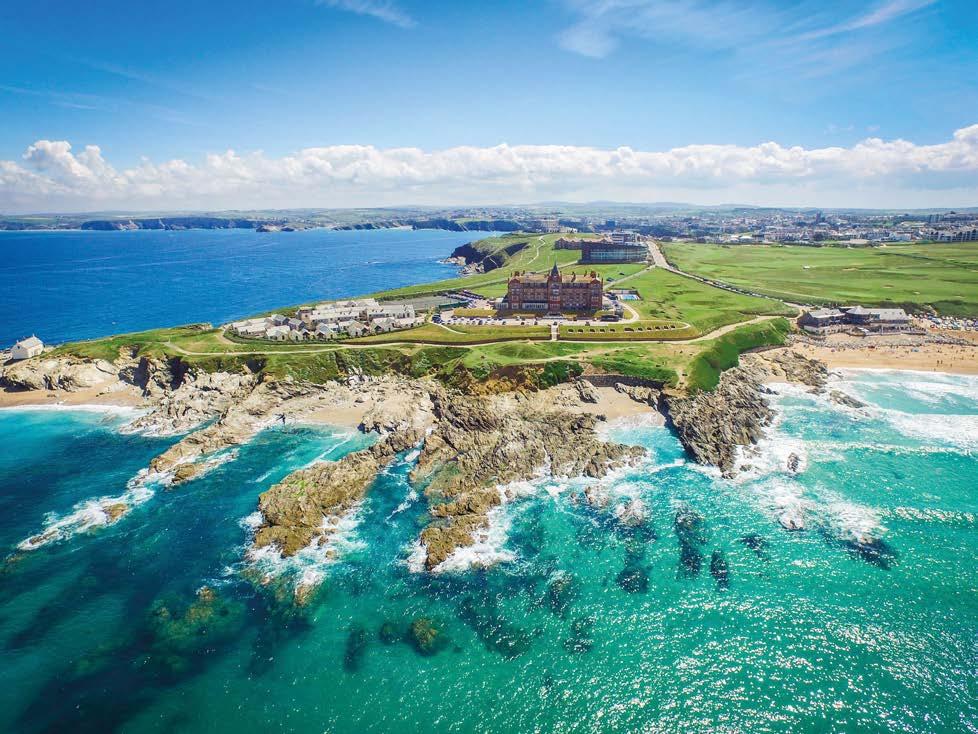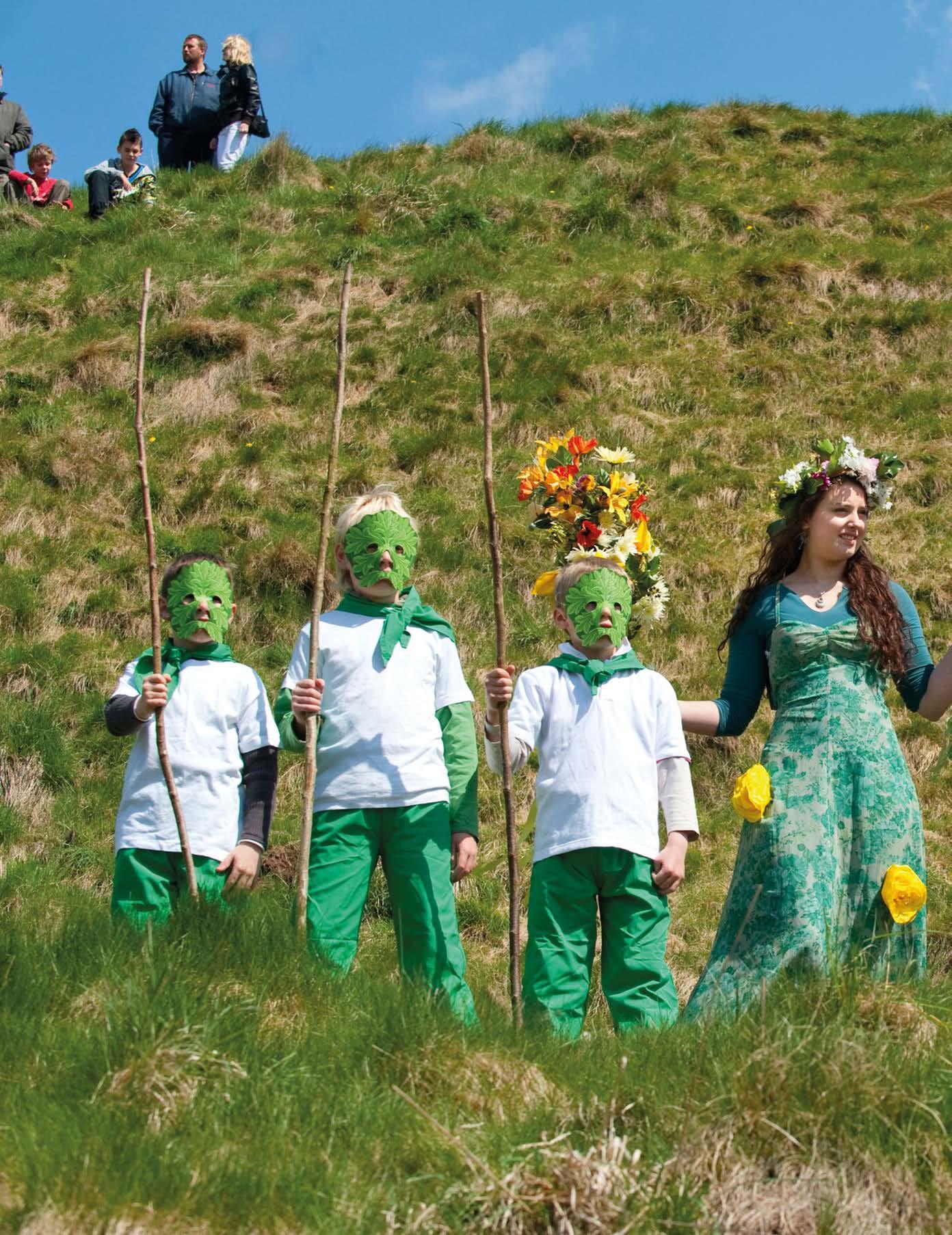
























































































Jeremy Flint meets the modern Earl of Devon for a behind-the-scenes tour of this historic castle and family home



Few things are more English than tea and scones, but, ponders Henrietta Easton, should the jam go on first or the cream?

Although the origins of cream tea are often disputed, according to local Devonshire historians, the act of adding jam and cream to bread was first concocted in Devon in the 11th century by the monks of Tavistock Abbey. Now, an indulgent cream tea is a British institution, and really what could be better than a freshly baked scone (plain or fruit, the choice is yours), with lashings of strawberry jam and a huge dollop of clotted cream, all washed down with a refreshing pot of tea?

Best associated with Devon and Cornwall, there is, however, an ongoing debate as to which is the right way to enjoy your cream tea. Although we think it is probably just a matter of personal preference, those in Devon and Cornwall would strongly disagree. In Devon, the cream is smoothed on the scone, with a dollop of jam on top, while in Cornwall it is the other way around. Whichever you prefer, what we do know is that the late Queen Elizabeth II was a fan of a cream tea and was known to take hers the Cornish way, with jam (Balmoral jam, of course) first and then cream – surely the Queen of England herself must be right? From farm shops to tearooms and grand hotels dotted around some of the prettiest spots in the South West, here are some of the best places you can try an authentic cream tea.

The Victorian, red-bricked Headland Hotel is a decadent spot for a traditional Cornish cream tea. Just a five-minute walk from the golden sands of Newquay’s Fistral Beach, the hotel sits on its own idyllic headland spot with some of the best views of the Atlantic in all of Cornwall. Its traditional cream tea, which comes with home-baked scones, strawberry jam, and the treasured Cornish export that is Rodda’s Cornish clotted cream, is best enjoyed al fresco on the hotel’s sunny sea-facing terrace with a pot of loose-leaf tea, or, if you’re feeling lavish, a glass of champagne. headlandhotel.co.uk


The first day of May has been celebrated as the beginning of summer for thousands of years. Lara Dunn explores the history of this joyful annual celebration…

There’s something undeniably uplifting about the unfurling of nature that occurs in the British Isles as the days grow longer, brighter and warmer. Winter clothes are optimistically packed away, while thoughts turn to picnics, barbecues and walks in the countryside. While we today may rejoice in the arrival of the promised ease of summer, for more ancient societies whose lives depended on the turning of the seasons, this opportunity to move herds to greener pastures or to see the first stirrings of crop growth must have been felt far more keenly.
Today’s May Day celebrations have their roots buried deeply in the Celtic calendar. Although it is highly likely that Celtic spring festivals go much further back still, the Celtic festival of Beltane – meaning Bel’s (a Celtic deity) Fire – was first mentioned in a glossary attributed to Cormac, bishop of Cashel and King of Munster, who was killed in 908.

Beltane was commonly observed on 1 May, falling midway between the spring equinox and the summer solstice. Considered to be one of the two most important of the Celtic festivals – alongside Samhain at the beginning of winter – it marked the start of the Irish summer and the ideal time to move cattle to fresh pastures. The occasion was usually celebrated with the lighting of bonfires and feasting. Cormac’s writing describes the moving of herds of cattle between ceremonial bonfires to magically protect them from disease in the year ahead. Beltane was also a time when the aos si (spirits or fairies) were thought to be especially active, and food, milk or specially baked cakes were often offered to keep them happy.
Beltane fire festivals may have become less common over the course of the 18th and 19th centuries, but their popularity has been on the rise again in recent decades, particularly in – but far from limited to – the traditionally Celtic parts of the British Isles. One of the largest takes place annually in Edinburgh – the Beltane Fire Festival started in 1988 and takes place on the city’s Calton Hill on the eve of 1 May and includes a procession accompanied by drums. Hundreds of miles away in Waterlooville, Hampshire, another annual fire festival involves the burning of a 40-foot-tall wickerman, while
This elegant recital venue is considered by many to be the international home of chamber music. Built in the Renaissance style with marble walls and floors, it was designed by English architect Thomas Collcutt whose work also included the Savoy Hotel and the Palace Theatre (originally the Royal English Opera House). Since Wigmore Hall first opened in 1901, many of the world’s leading musicians have appeared there, from Benjamin Britten to David Bowie. These days, many of its evening concerts are live-streamed online for free and it also presents lunchtime concerts in association with BBC Radio Three.

wigmore-hall.org.uk
Follow Londonphile Russell Higham each issue as he takes an insider’s look at the past, present and future of Britain’s capital city and everything it has to offer – this issue he focuses on the capital’s concert halls

As Leonard Bernstein said: “Life without music is unthinkable”. Luckily, in London, where the very idea of the concert was first born (violinist John Banister started giving performances to the public at his Whitefriars home in 1672), one is never too far from a music hall, opera house, theatre, or performance space. Whether your taste be for classical, jazz, pop, or rock, let me show you some of London’s best and most historic musical venues, from the West End to the East End via the South Bank.
Home to the English National Opera (ENO), the London Coliseum, which seats 2,359 people, is the West End’s largest theatre. Designed by the theatrical architect Frank Matcham, it opened on Christmas Eve 1904. Today, the ENO stages operas mainly sung in English (handy if your German or Italian is a tad rusty), and have a policy of making tickets affordable to everybody. Prices start at just £10 and under-21s go free. Unfortunately, Arts Council England have put their future funding in doubt and told them to relocate, so catch world-class opera at the Coliseum while you still can. eno.org